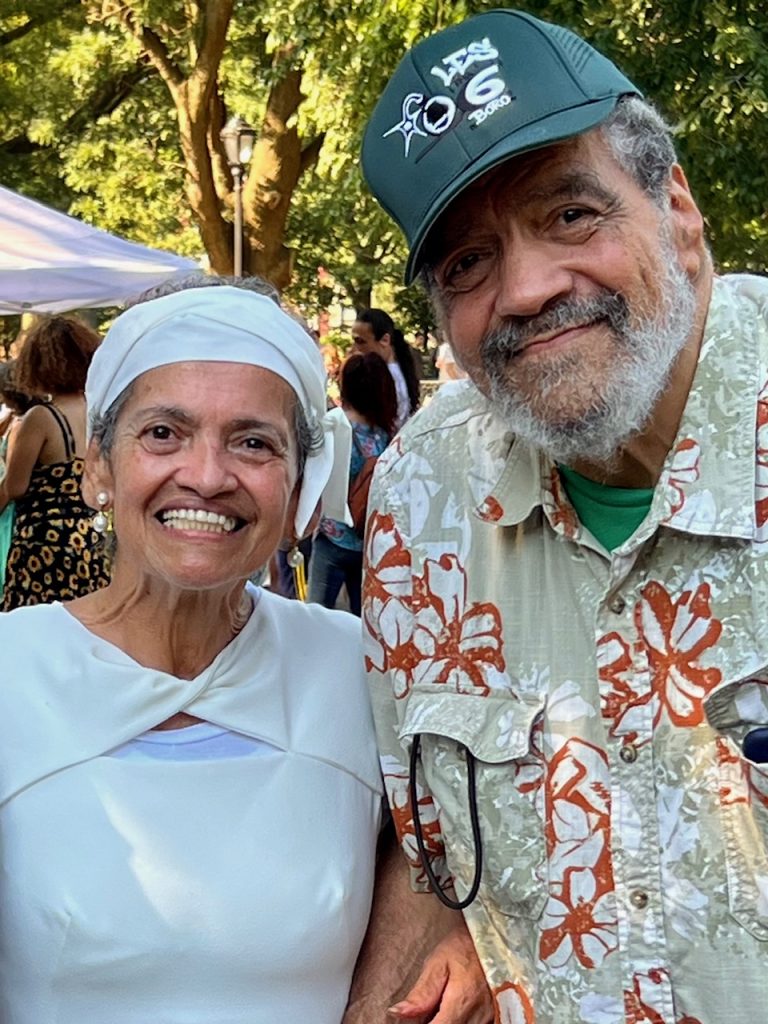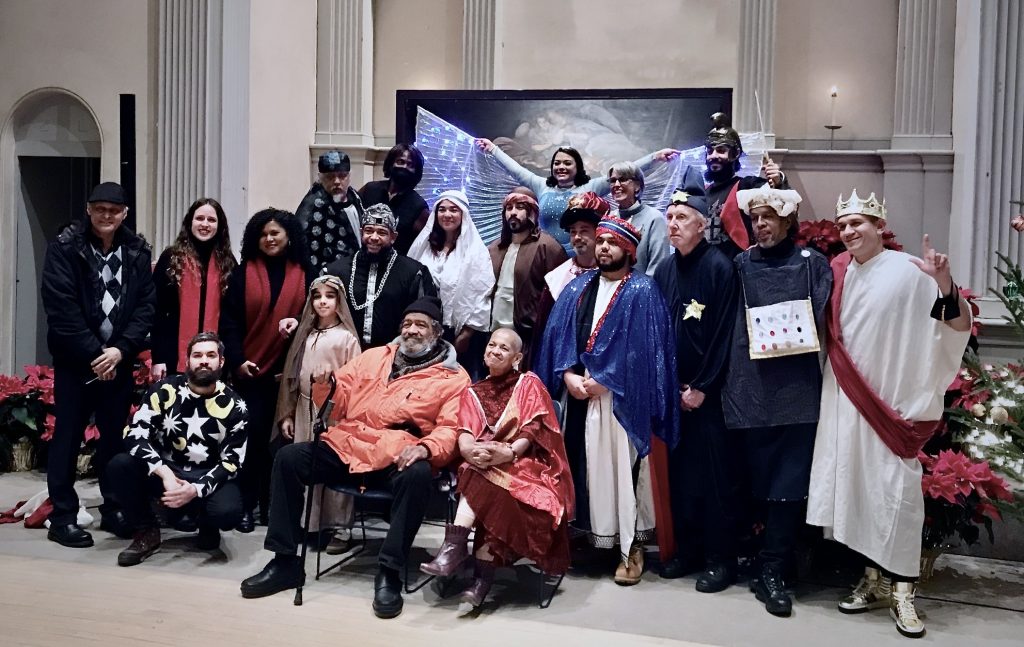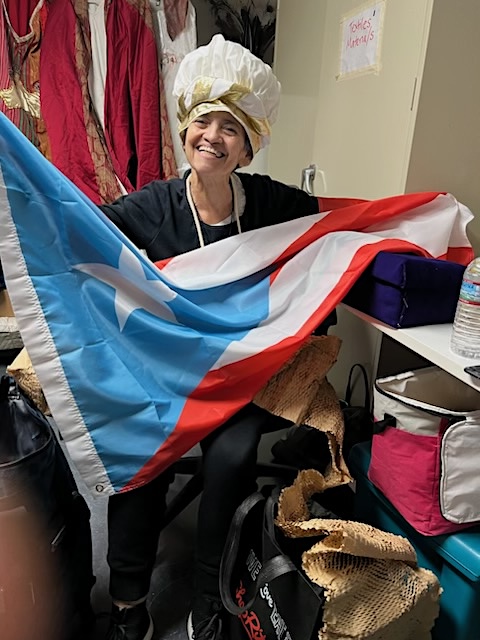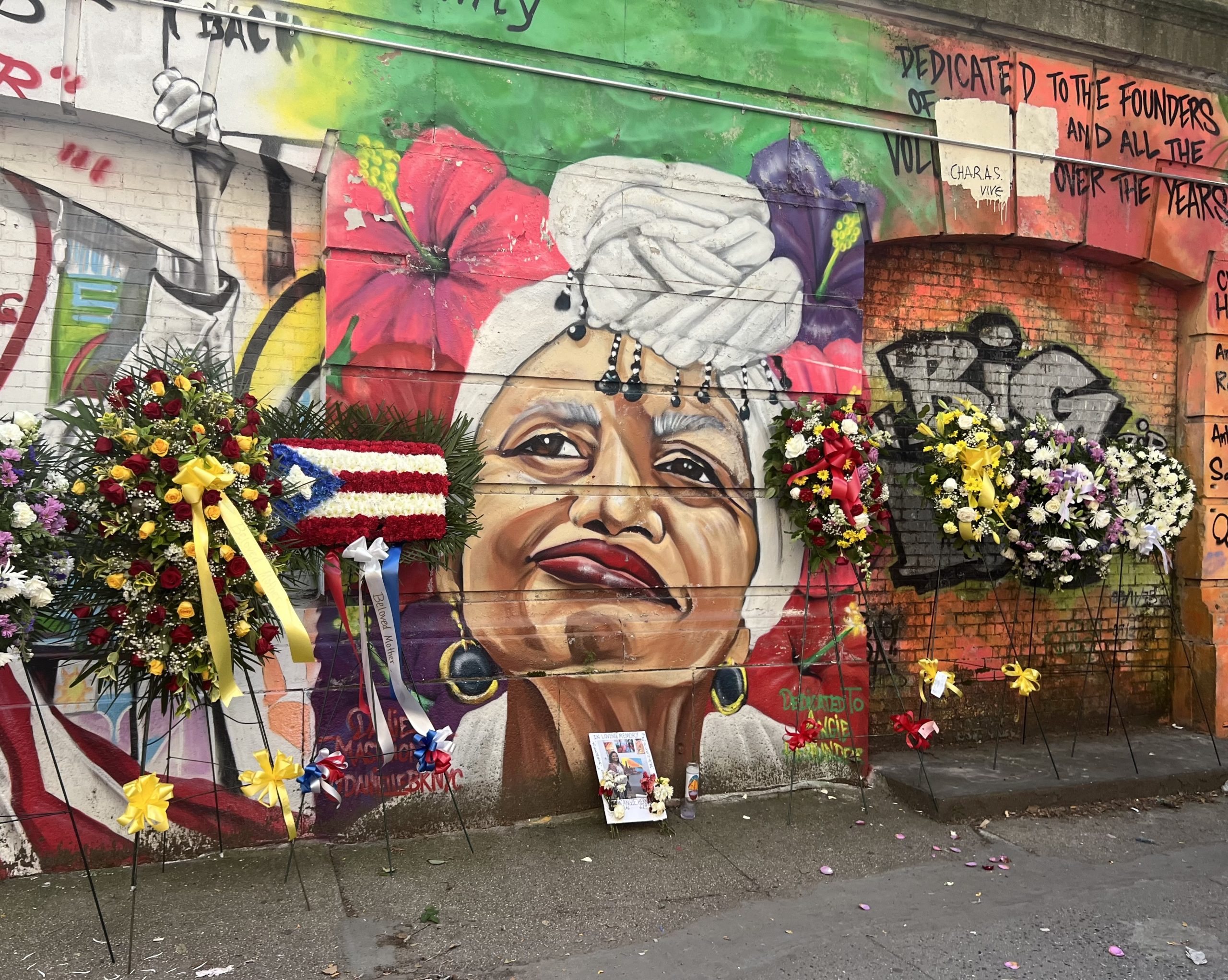BY BONNIE ROSENSTOCK | María de los Angeles “Angie” Hernández Osorio, an indefatigable advocate for Boricua culture through community service, education and the arts, died on Sat., June 29, after a long battle with cancer. She was 77.
Her remarkable life was memorialized in song, music, a slide show, tributes and an outpouring of love from family and friends on Sun., July 7 at the East Side Tabernacle church, at 254 E. Second St. Kiki Cotto played guitar and sang songs in Spanish that resonated with Hernández. He was accompanied by Marcus Pena on keyboard and Evan Adames on drum.
Hernández was born on July 23, 1946, in Comerio, Puerto Rico, in the impoverished neighborhood of El Fanguito. Thanks to her grandmother, Rafaela Osorio, who supported the family by spinning tobacco and selling homemade rum, they eventually moved to their own home in the outskirts of Santurce. The Hernández family emigrated to New York City around 1951 when Hernández was 5 and shortly thereafter moved to E. 107th Street in “El Barrio.” The family moved several times and eventually settled on the Lower East Side.

Her community work and participation with the Real Great Society, a Puerto Rican youth collective, created by Angelo González and Carlos Chino García in 1964 (headquartered on E. Seventh Street and Avenue A), and later with its successor, CHARAS, which operated El Bohio, a Puerto Rican cultural center at 605 E. Ninth St., founded in 1979, coupled with her love of folkloric Afro-Caribbean dance and performance, helped establish her as an influential artist and mentor to neighborhood youth. Hernández might not have been an official CHARAS co-founder, but she is honored as such on a mural painted on the building’s back wall on E. 10th Street.
In the 1970s, she was also involved with the Association of Community Services (known as “The Association,” on E. Ninth Street), and the Neighborhood Youth Corps. At the Association she met Tato Laviera, the then-coordinator of the program, who provided Hernández with a space to conduct music and dance workshops in exchange for her help with the organization’s lunch distribution program. It was there that she began nurturing the children as performers and advocates in her newly created Grupo Cemí, which focused on bomba and plena, traditional Puerto Rican percussion-driven dance and music infused with African roots. They performed their drum and dance routines in the burned-out vacant lots of the Lower East Side and at local venues like the Nuyorican Poets Cafe, New Rican Village and CHARAS. Cotto was part of Hernández’s seminal group, where he learned how to play bomba.
“To me she was like a mom,” Cotto said.
“She was poetry in motion in the slums where people didn’t want to go,” said one of the pastors at the church memorial.

Frustrated with the educational system, Hernández had dropped out of school before graduating, but later sought out her GED. She returned to Puerto Rico to study folkloric dance and the history of bomba and plena. She also spent three years studying for her bachelor’s degree in English at the University of Puerto Rico in San Juan. While there, she experienced a religious reawakening in the Pentecostal church and ultimately graduated from El Instituto de Iglesias Cristiana Inc.
In the mid-’90s, she returned to New York and conducted workshops in mask-making at CHARAS. She taught bomba dance and performed in a variety of neighborhood venues with her new ensemble, Cemí-Ya (mid-1990s to 2005), all the while spreading the gospel through the arts. She also taught the Bible at the Instituto Biblico Damasco while attending the Damascus Christian Church of Hunts Point in the Bronx, where she remains a beloved figure.

One of Hernández’s lasting legacies is the celebrated “The Gifts of the Magi,” the retelling of the Three Kings story and gift-giving to the baby Jesus, which she wrote and directed, with music, dance and dialogue, in both English and Spanish, infused with Puerto Rican humor. In 2000, CHARAS’s García wanted to give gifts to local children at Christmas and encouraged Hernández to write a theater piece. The five-minute skit evolved from a piece originally presented at the Henry Street Playhouse, “peace/La Paz,” co-written by Nuyorican poet Tato Laviera in the late ’80s. It has since blossomed into an almost one-hour spectacular, presented at St. Mark’s Church in the Bowery for nine years until 2009 and then again in 2023. On Jan. 6, 2024, due to unfortunate circumstances, it was pared down to 15 minutes and presented at another local venue, the Loisaida Center, but without losing its powerful message.
Hernández is survived by her four devoted children, David (Daso) Soto, a youth and community organizer and musician; Iván Calcano, who works in medical administration; Martha Acevedo Badillo, a medical assistant; and Peter Acevedo, a social worker and pastor at Damascus Christian Church on E. Fourth Street; and numerous grandchildren. Interment took place on Tues., July 9, at Rose Hill Cemetery in Linden, New Jersey.
Another pastor declared, “This is a celebration of her life and you should be dancing in the streets now.”


This is amazing. Wow what a life. To all touched by her grace, service , care, love and light continue with her strength and guidance. We give thanks. All the best and best to all. PALANTE, Sincerely Montalvo.
A beautiful remembrance. I wonder–who was her husband? She had 4 children.